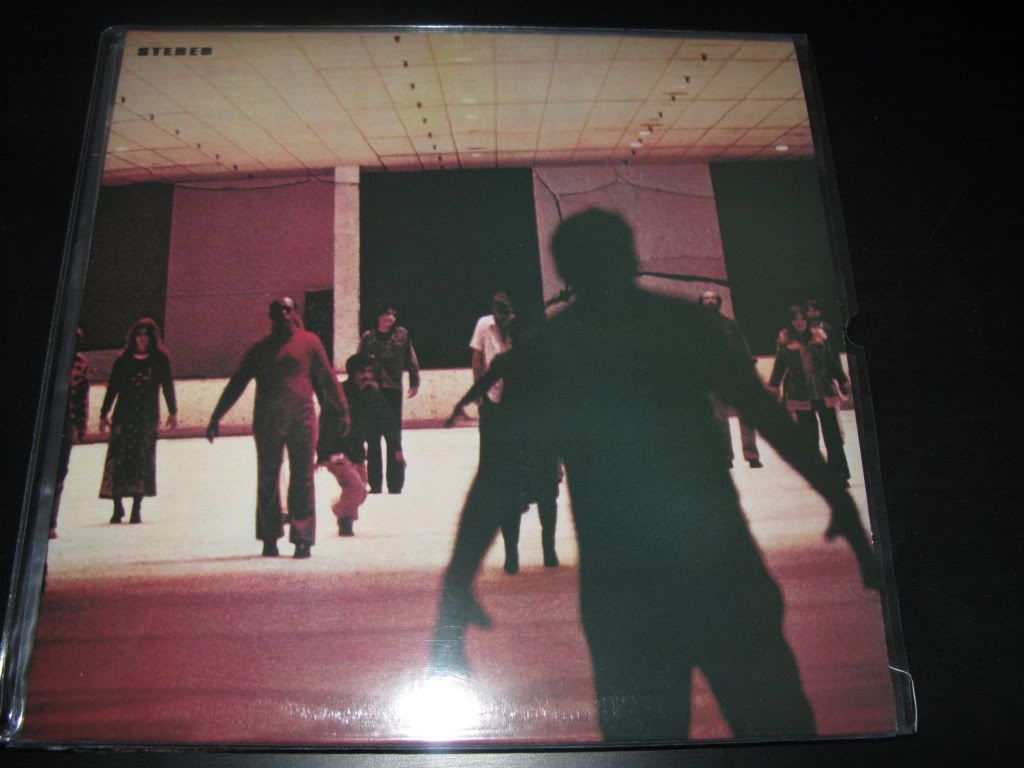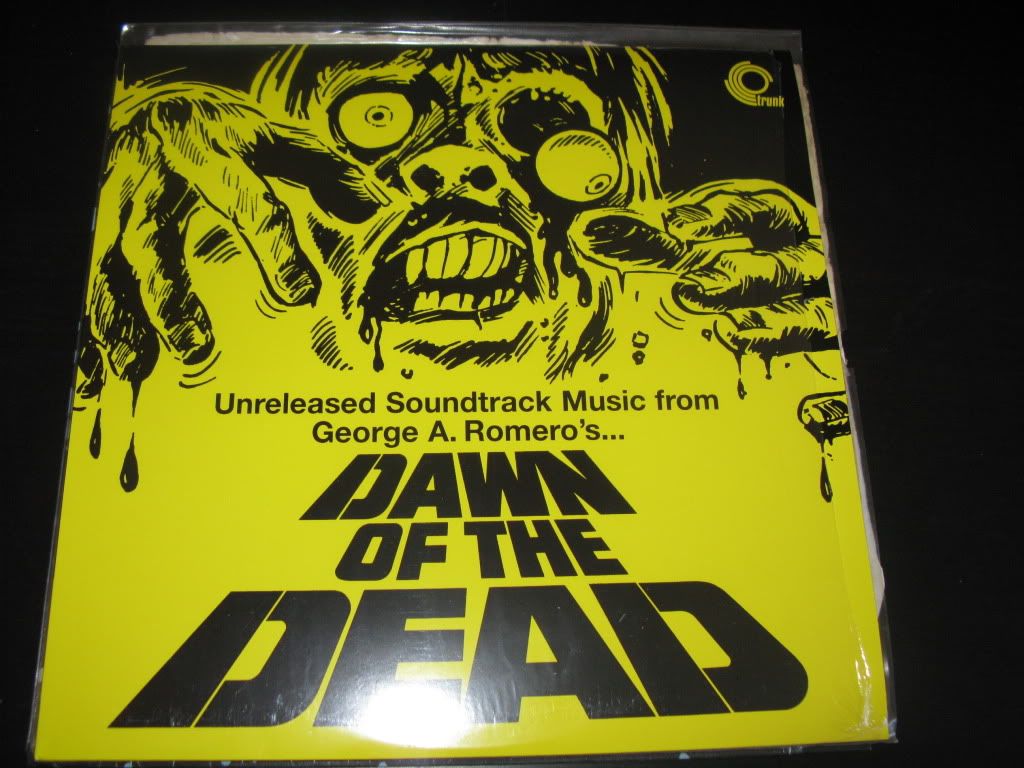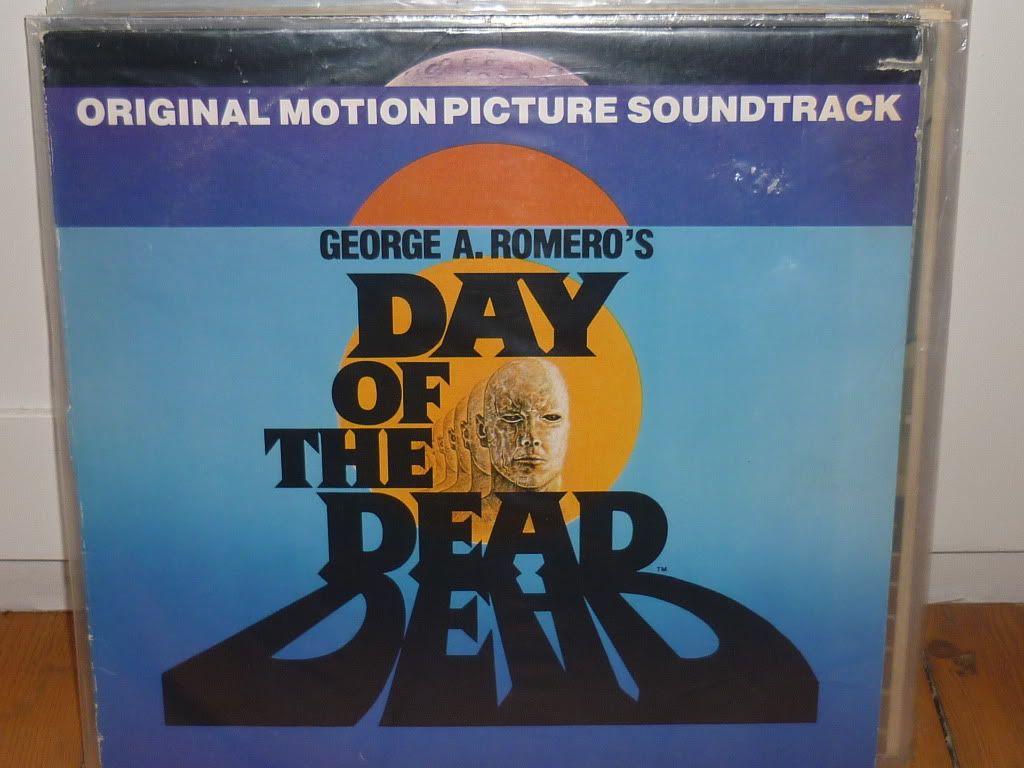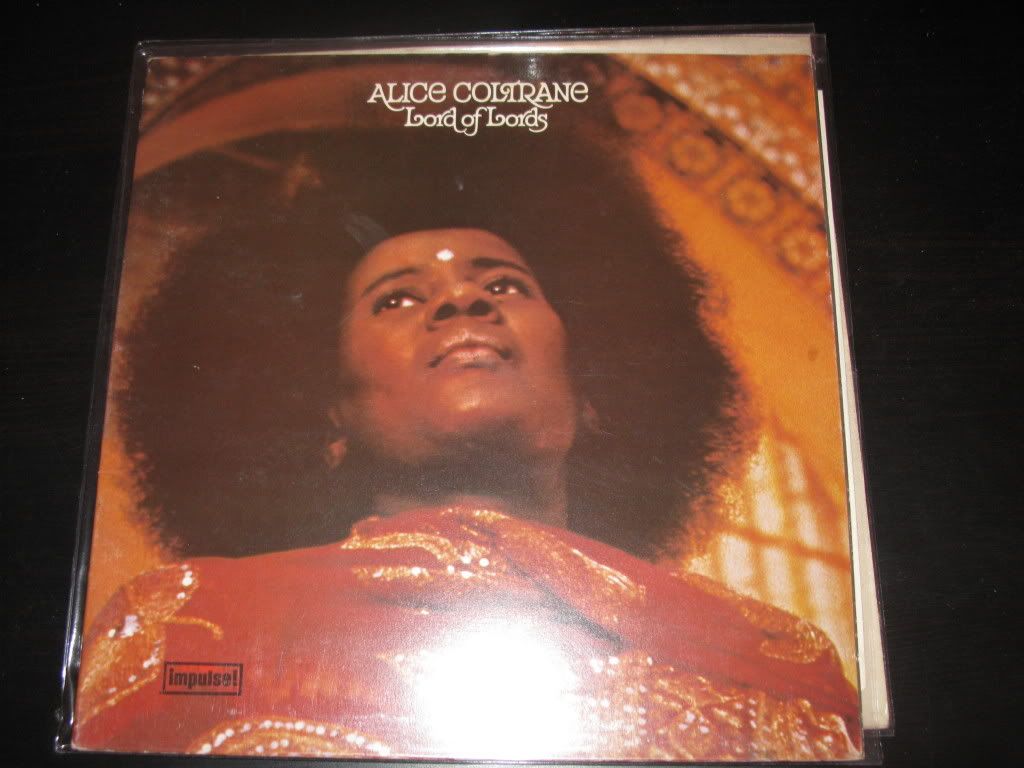From the title of this blog you could probably guess I was a Romero fan. I've loved his Zombie movies ever since I caught Day of the Dead on late night TV when I was far too young to be allowed to watch it. Which made it all the more thrilling!
I had never seen anything like it. The gore and blood were good, although I don't remember being too grossed out by them - perhaps it was a cut version. But it was the political message of the film that got me. Even as a small kid I could tell that this was an attack on consumer society - or shopping as I called it in those days. I can barely go to a shopping mall today without looking at all of the shopping zombies around me. I am, of course, not like them!
When I discovered that there were more films by the same director I was thrilled. What I didn't realise is that they were all so different. Of course, being different they also have very different soundtracks.
The soundtrack to 1968's Night of the Living Dead wasn't released until 1982. In part that was because the 'soundtrack' consisted of library cuts chosen by Romero from the Capitol Hi-Q Library.
When choosing the music he wanted, Romero made a deliberate effort to select music that he thought evoked earlier horror films. Whether deliberately or accidentally he chose tracks that had been previously used in The Hideous Sun Creature, Teenagers from Outer Space and Terror from the Year 5,000 (none of which I've seen!).
The use of library music, although undoubtedly financially motivated, unintentionally adds to the tension and in some places horror of the film. The music is 'familiar', it instantly evokes the kind of emotions that are expected. We have all heard this 'kind' of music before and, even if we don't consciously hear it our emotions are directed by it.
String driven and melodramatic, these tracks have, for me, moved beyond mere background music and now remind me of each scene. However, without the images of the zombies the music can in places be quite beautiful. I particularly like First Advance by Ib Glindemann for its imaginative use of heavy percussion and strings.
If you haven't seen the film, shame on you. And now is your chance to see it:-
Night of the Living Dead was such a success that it was inevitable that Romero should make a sequel, although he tried not to and made the not very successful romantic comedy There's Always Vanilla, the unsatisfactory Season of the Witch, the creepy Crazies and the even more creepy Martin before returning to the undead.
The story of the production of Dawn of the Dead is convoluted. You can read about it here.
One of the results of Romero's partnership with Italian film-maker Dario Argento was the use of the Italian prog rock band Goblin on the soundtrack. Goblin's first film score had been for the European cut of Romero's Martin.
Needless to say the music is much more modern than the 1950s cuts in the previous film. But then Dawn is also a more sophisticated film. Shot in colour, with a bigger budget and superior special effects the synthesisers and metronomic beat of the Goblin score provides the perfect accompaniment.
I love the space that each track has and the way that they develop slowly. The build of tense is achieved in much the same fashion as the earlier library tracks, but this time it is a synthesiser rather than a string section that produces the creepy effect.
Claudio Simonetti, keyboardist for Goblin went on to write disco and I think you can hear it in some of the funkier passages of the record.
Although, for me, the highlights are the electronic pieces there are also some, very strange, violin tracks which sound very unconvincing.
Just as there are many versions of the film there are many versions of the soundtrack, even a Japan only 45!
I am afraid to say that mine is the Dagored 2000 release.
In the end the Goblin music was only used in the Italian/ European release (which was cut in a different way too).
However, my version of the extended cut includes the Goblin music as well as the music used on the American release.
Again if you haven't seen the film then there must be something wrong with you:
Here it is:
The Goblin music was only part of the Dawn of the Dead soundtrack but until the nice people at Trunk Records it was unavailable.
Terrible sleeve mind you. Doesn't it look slightly like Phil Seaman? Check for yourself here.
Just as he had done for Night of the Living Dead, Romero used library recording for his soundtrack to Dawn of the Dead. Using the De Wolfe Library this time Romero brought together a group of song with a completely different feel.
Gone are the 50s B-Movie horror strings and in their place is a mix of menacing synthesisers, some very avant garde sounding works and even some Radiophonics.
I tracks such as Cosmology Part 1 by Pierre Lemel are almost too difficult for me to listen to - although just for the sake of this blog I have done!
One of the 'highlights' of the record is The Gonk by Herbert Chappell. It appears at the end of the film as the zombies take over the mall and in particular as they walk across the ice skating rink. Personally I've never really liked it but others do.....
Figment by Simon Park on the other hand is a great bit of uptempo action music, not really horror more cop music.
Hats off once more to Romero for finding these perfect tracks.
Perhaps the experience of having Goblin score Dawn of the Dead influenced Romero but I suspect that the decision to involve John Harrison in the soundtrack was an attempt by t the studio to produce a marketable product. Some of the quirkiness of the library tracks has gone unfortunately.
That said I like this soundtrack very much indeed. The opening track The Dead Walk is almost disco. In a way this record reminds me of the music of John Carpenter, particularly his score for Assault on Precinct 13, particularly Breakdown which is fantastic.
The vocal numbers If Tomorrow Comes and The World Inside You Eyes, could, perhaps, have been left of the record but you can't have everything.
I was playing the side long The Dead Suite recently and my daughter asked me to take it off. "Its very scary music daddy," she said. And that is all you need to know about it.
If you've read down to here you have surely seen the film but if not here it is:
I had never seen anything like it. The gore and blood were good, although I don't remember being too grossed out by them - perhaps it was a cut version. But it was the political message of the film that got me. Even as a small kid I could tell that this was an attack on consumer society - or shopping as I called it in those days. I can barely go to a shopping mall today without looking at all of the shopping zombies around me. I am, of course, not like them!
When I discovered that there were more films by the same director I was thrilled. What I didn't realise is that they were all so different. Of course, being different they also have very different soundtracks.
The soundtrack to 1968's Night of the Living Dead wasn't released until 1982. In part that was because the 'soundtrack' consisted of library cuts chosen by Romero from the Capitol Hi-Q Library.
When choosing the music he wanted, Romero made a deliberate effort to select music that he thought evoked earlier horror films. Whether deliberately or accidentally he chose tracks that had been previously used in The Hideous Sun Creature, Teenagers from Outer Space and Terror from the Year 5,000 (none of which I've seen!).
The use of library music, although undoubtedly financially motivated, unintentionally adds to the tension and in some places horror of the film. The music is 'familiar', it instantly evokes the kind of emotions that are expected. We have all heard this 'kind' of music before and, even if we don't consciously hear it our emotions are directed by it.
String driven and melodramatic, these tracks have, for me, moved beyond mere background music and now remind me of each scene. However, without the images of the zombies the music can in places be quite beautiful. I particularly like First Advance by Ib Glindemann for its imaginative use of heavy percussion and strings.
If you haven't seen the film, shame on you. And now is your chance to see it:-
Night of the Living Dead was such a success that it was inevitable that Romero should make a sequel, although he tried not to and made the not very successful romantic comedy There's Always Vanilla, the unsatisfactory Season of the Witch, the creepy Crazies and the even more creepy Martin before returning to the undead.
The story of the production of Dawn of the Dead is convoluted. You can read about it here.
One of the results of Romero's partnership with Italian film-maker Dario Argento was the use of the Italian prog rock band Goblin on the soundtrack. Goblin's first film score had been for the European cut of Romero's Martin.
Needless to say the music is much more modern than the 1950s cuts in the previous film. But then Dawn is also a more sophisticated film. Shot in colour, with a bigger budget and superior special effects the synthesisers and metronomic beat of the Goblin score provides the perfect accompaniment.
I love the space that each track has and the way that they develop slowly. The build of tense is achieved in much the same fashion as the earlier library tracks, but this time it is a synthesiser rather than a string section that produces the creepy effect.
Claudio Simonetti, keyboardist for Goblin went on to write disco and I think you can hear it in some of the funkier passages of the record.
Although, for me, the highlights are the electronic pieces there are also some, very strange, violin tracks which sound very unconvincing.
Just as there are many versions of the film there are many versions of the soundtrack, even a Japan only 45!
I am afraid to say that mine is the Dagored 2000 release.
In the end the Goblin music was only used in the Italian/ European release (which was cut in a different way too).
However, my version of the extended cut includes the Goblin music as well as the music used on the American release.
Again if you haven't seen the film then there must be something wrong with you:
Here it is:
The Goblin music was only part of the Dawn of the Dead soundtrack but until the nice people at Trunk Records it was unavailable.
Terrible sleeve mind you. Doesn't it look slightly like Phil Seaman? Check for yourself here.
Just as he had done for Night of the Living Dead, Romero used library recording for his soundtrack to Dawn of the Dead. Using the De Wolfe Library this time Romero brought together a group of song with a completely different feel.
Gone are the 50s B-Movie horror strings and in their place is a mix of menacing synthesisers, some very avant garde sounding works and even some Radiophonics.
I tracks such as Cosmology Part 1 by Pierre Lemel are almost too difficult for me to listen to - although just for the sake of this blog I have done!
One of the 'highlights' of the record is The Gonk by Herbert Chappell. It appears at the end of the film as the zombies take over the mall and in particular as they walk across the ice skating rink. Personally I've never really liked it but others do.....
Figment by Simon Park on the other hand is a great bit of uptempo action music, not really horror more cop music.
Hats off once more to Romero for finding these perfect tracks.
Perhaps the experience of having Goblin score Dawn of the Dead influenced Romero but I suspect that the decision to involve John Harrison in the soundtrack was an attempt by t the studio to produce a marketable product. Some of the quirkiness of the library tracks has gone unfortunately.
That said I like this soundtrack very much indeed. The opening track The Dead Walk is almost disco. In a way this record reminds me of the music of John Carpenter, particularly his score for Assault on Precinct 13, particularly Breakdown which is fantastic.
The vocal numbers If Tomorrow Comes and The World Inside You Eyes, could, perhaps, have been left of the record but you can't have everything.
I was playing the side long The Dead Suite recently and my daughter asked me to take it off. "Its very scary music daddy," she said. And that is all you need to know about it.
If you've read down to here you have surely seen the film but if not here it is:




